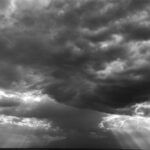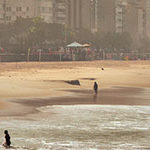Although sunny days are great for getting out of the house and enjoying the outdoors, they’re not always the best days for shooting. The high contrast can ruin potentially good shots. However, shooting in the sun can get you some great images if you know how to deal with it. In this video, photographer Joe McNally shows how he shoots portraits on a sunny day with the help of some light shaping tools:
Equipment McNally Uses For His Sunny Day Shoot
- Large Object to Create Shade. In the video, McNally uses an Elinchrom 74-inch Octa Light to create a shady spot for his subjects to stand. You don’t need something quite as fancy or expensive. This is just what McNally had on hand. You can use many other things to block out the sun. Just be careful that it’s not too heavy or in a position to be blown over by the wind causing potential dangers to the crew, models, and equipment.
- Light Shaping Softbox. There are many different softboxes available to change the quality of your light. Some are small and square, others are large and circular. For this shoot, McNally has decided to use an Elinchrom 13×68″ strip light. This provides a soft diffused light that reaches the top and bottom of the subjects.
- Slightly Telephoto Lens. McNally uses a Nikon 85mm f/1.4 lens. This is a personal preference and is not an advantage to shooting on a sunny day. However, it is a very nice lens for portraits.
- LCD Optical Viewfinder. This affordable little piece of equipment allows you to view your LCD screen on a bright, sunny day. Without it, it’s hard to get a true sense of the values and tonality of your images. McNally prefers his Hoodman Loupe.

Putting your subjects in the shade allows you to better control the lighting on them
Remember, shooting in open shade is often your best bet as you don’t have to fight the sun. You have even lighting on your subjects to manipulate as you wish with strobes, and your subjects don’t have to squint from looking into the sun.
Like This Article?
Don't Miss The Next One!
Join over 100,000 photographers of all experience levels who receive our free photography tips and articles to stay current:






Leave a Reply